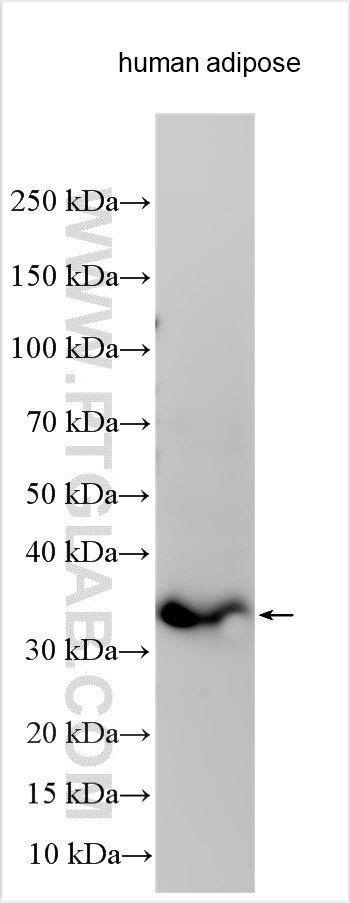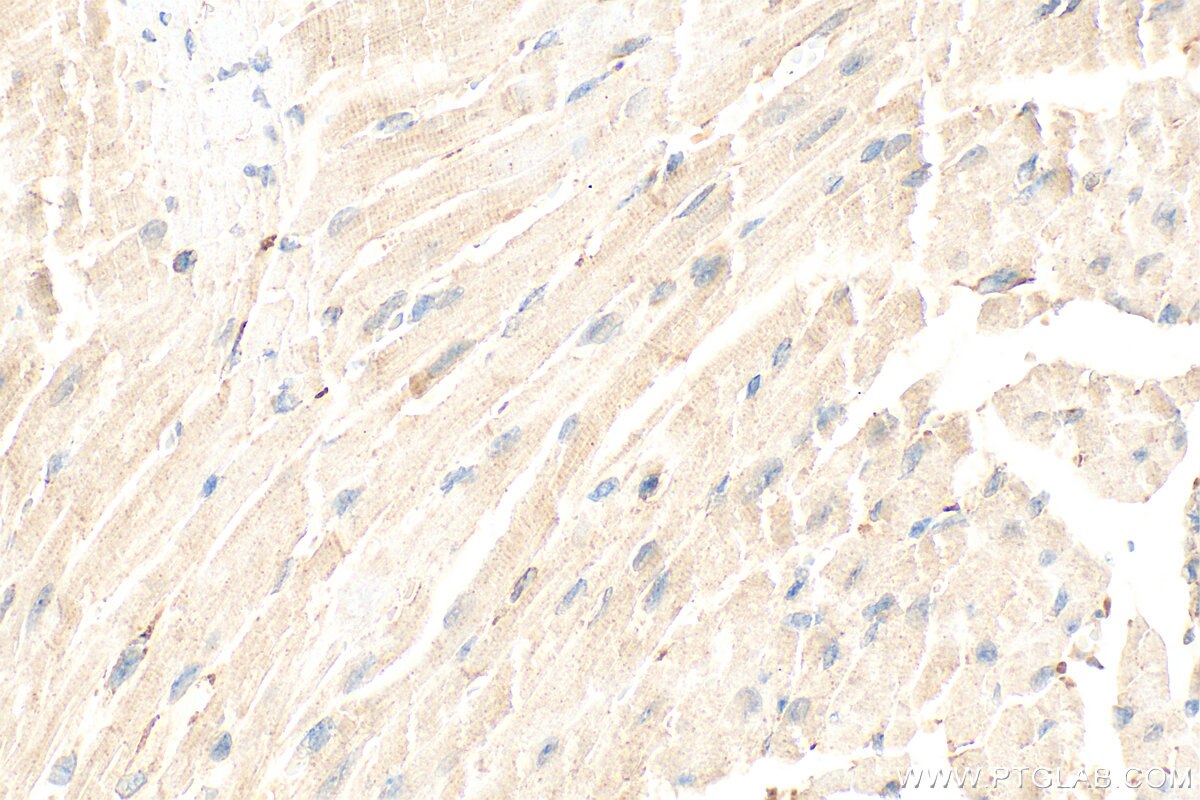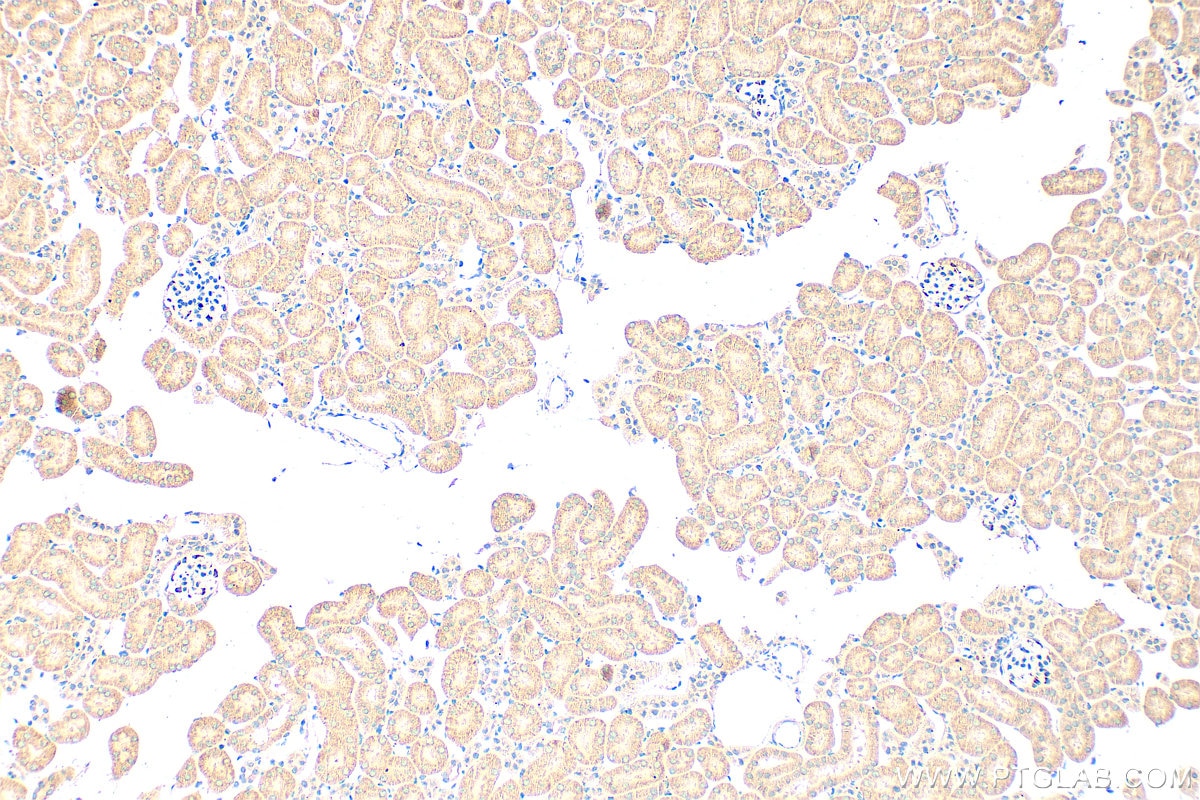Validation Data Gallery
Tested Applications
| Positive WB detected in | human adipose tissue |
| Positive IHC detected in | mouse heart tissue, mouse kidney tissue Note: suggested antigen retrieval with TE buffer pH 9.0; (*) Alternatively, antigen retrieval may be performed with citrate buffer pH 6.0 |
Recommended dilution
| Application | Dilution |
|---|---|
| Western Blot (WB) | WB : 1:500-1:2000 |
| Immunohistochemistry (IHC) | IHC : 1:200-1:800 |
| It is recommended that this reagent should be titrated in each testing system to obtain optimal results. | |
| Sample-dependent, Check data in validation data gallery. | |
Product Information
30289-1-AP targets CTRP1 in WB, IHC, ELISA applications and shows reactivity with human, mouse samples.
| Tested Reactivity | human, mouse |
| Host / Isotype | Rabbit / IgG |
| Class | Polyclonal |
| Type | Antibody |
| Immunogen | CTRP1 fusion protein Ag31779 相同性解析による交差性が予測される生物種 |
| Full Name | C1q and tumor necrosis factor related protein 1 |
| Calculated molecular weight | 32KD |
| Observed molecular weight | 35 kDa |
| GenBank accession number | NM_030968 |
| Gene Symbol | CTRP1 |
| Gene ID (NCBI) | 114897 |
| RRID | AB_3669708 |
| Conjugate | Unconjugated |
| Form | Liquid |
| Purification Method | Antigen affinity purification |
| UNIPROT ID | Q9BXJ1 |
| Storage Buffer | PBS with 0.02% sodium azide and 50% glycerol , pH 7.3 |
| Storage Conditions | Store at -20°C. Stable for one year after shipment. Aliquoting is unnecessary for -20oC storage. |
Background Information
C1q and tumor necrosis factor related protein 1(CTRP1), also known as C1QTNF1, is a member of the CTRP superfamily. CTRP1 is a secreted glycoprotein synthesized by a variety of tissues and cells, such as adipose tissue and macrophages. CTRP1 is a paralog of adiponectin. CTRP1 plays a critical role in regulating inflammation and lipid metabolism and acts as a targeted treatment for atherosclerosis, heart failure, hypertension, NAFLD, and diabetes mellitus (PMID: 36812667).
Protocols
| Product Specific Protocols | |
|---|---|
| WB protocol for CTRP1 antibody 30289-1-AP | Download protocol |
| IHC protocol for CTRP1 antibody 30289-1-AP | Download protocol |
| Standard Protocols | |
|---|---|
| Click here to view our Standard Protocols |


